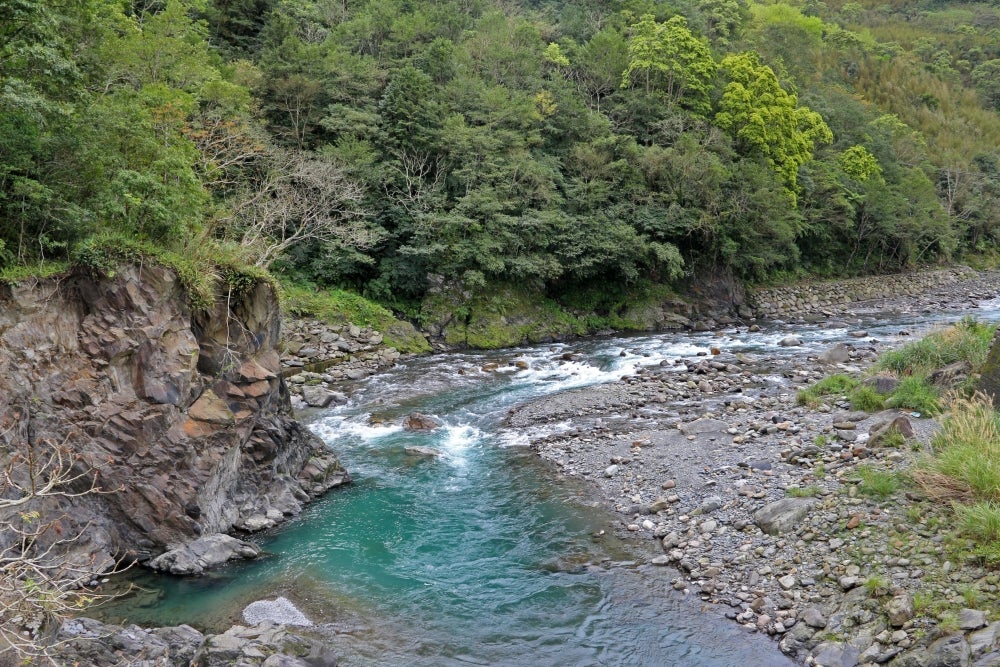
Rivers Shaped by Climate


Geoscientists have struggled for decades to detect the influence of climate on the formation of rivers, but until now there had been no systematic evidence.
In a paper published today in the journal Nature, UC Santa Barbara researchers Katerina Michaelides and Michael Singer describe a clear climatic signature on river morphology that challenges existing theories. Faculty members in the campus’s Earth Research Institute, Michaelides and Singer also have appointments in the UK and collaborated with two other UK scientists to investigate this phenomenon.
Water flows downhill, so the path a river takes from its source to its mouth always descends in elevation. In some rivers, this path descends steeply out of the uplands and then flattens out in the lowlands. This results in an elevational profile — which scientists call a long profile — that is concave up, similar to the shape of the inside of a bowl from the rim to the bottom. In contrast, a straight long profile descends evenly in elevation, like a ramp.
The new research suggests that river long profiles tend to be concave up in humid regions and become progressively straighter in drier regions.
“The long profile is formed gradually over tens of thousands to millions of years, so it tells a bigger story about the climate history of region,” said lead author Shiuan-An Chen, Michaelides and Singer’s doctoral student from the University of Bristol. “We would expect climate to affect the river long profile because it controls how much water flows in rivers and the associated force of water to move sediment along the riverbed.”
Until now scientists have lacked a large, systematic dataset of rivers that spans the range of climate zones on Earth. This has hindered a full exploration of the links between climate and river form. The research team produced a new, freely available database of river long profiles generated from data originally collected by NASA’s space shuttle. They used specialized software developed by co-author Stuart Grieve, at Queen Mary University London, to develop a new long profile database that includes over 330,000 rivers across the globe.
The study shows for the first time at the global scale that there are distinct differences in river long profile shapes across climate zones, and that the reason behind these differences lies in the effect of aridity on streamflow.
Rivers in humid regions tend to flow year-round, continually moving sediment and eroding the overall profile into a concave up shape. As the climate becomes progressively more arid, rivers move sediment less frequently, flowing only a few times per year when it rains. Additionally, arid rivers tend to experience brief, intense rainstorms that don’t generate flow over the river’s entire length.

Rivers in humid areas have concave profiles whereas those in arid regions are straight.
Photo Credit: KATERINA MICHAELIDES
The researchers investigated the links between climate, streamflow and long profile shape via a numerical model that simulates the evolution of river profiles over time in response to streamflow characteristics.
The authors show that, regardless of all other potential controls on river profiles, streamflow characteristics have a dominant effect on the final profile shape. Namely, the differences in the climatic expression of streamflow explain the variations in profile shape across climatic regions in their database.
“Traditional theory included in textbooks for decades describes that river long profiles evolve to be concave up,” said UC Santa Barbara’s Michaelides, who led the research. “Existing theories are biased towards observations made in humid rivers, which are far better studied and more represented in published research than dryland rivers.”
“Our study shows that many river profiles around the world are not concave up, and that straighter profiles tend to be more common in arid environments,” she added. “The fact that we find clear and systematic differences in river long profile shape across climate zones despite the many other controlling factors mixed in, is pretty remarkable.”
Singer agreed, saying “It's been a holy grail to find climate signatures in landscapes for quite a while. We have finally detected the signature of aridity that is systematically expressed across the globe.”



